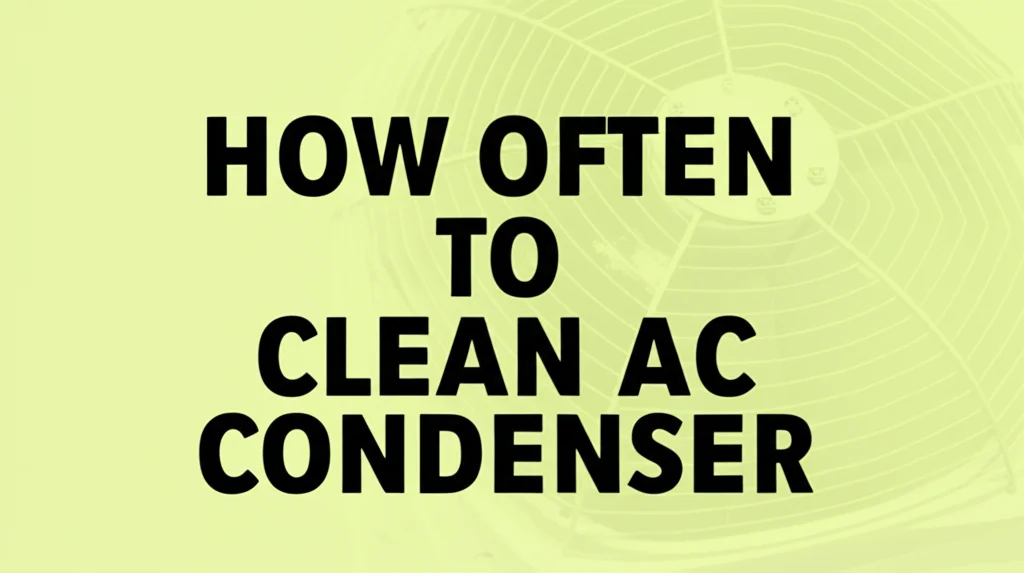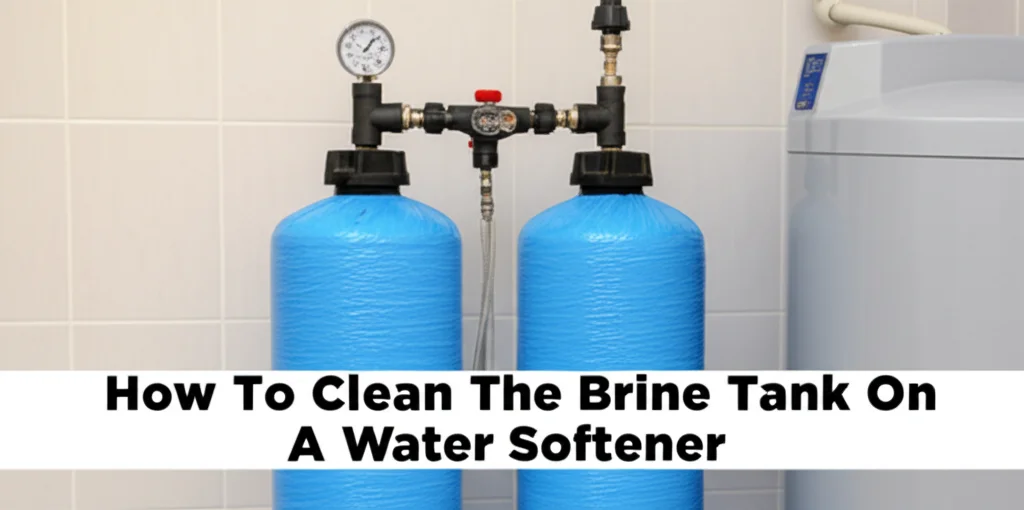· Home Maintenance · 8 min read
How To Clean Well Sediment Filter?

Keeping Your Water Clear: How To Clean a Well Sediment Filter
Is your water looking a little cloudy or discolored? A clogged sediment filter could be the culprit. Many homeowners with well water systems don’t realize how crucial regular sediment filter cleaning is for maintaining water quality and protecting their plumbing. This article will walk you through everything you need to know about cleaning your well sediment filter, ensuring you have clean, safe water for your home. We’ll cover identifying filter types, the cleaning process, and how often you should be doing it. Let’s dive in and keep your well water flowing smoothly!
Quick Answer: To clean a well sediment filter, turn off the water supply, relieve pressure, open the filter housing, remove and clean the filter element (or replace it if necessary), reassemble, and slowly turn the water back on.
Takeaway:
- Regularly cleaning your sediment filter protects your well system.
- Knowing your filter type is key to proper cleaning.
- Consistent maintenance ensures clean, safe water for your home.
Understanding Your Well Sediment Filter
Before you start cleaning, it’s important to understand what a sediment filter does and the different types available. Sediment filters are the first line of defense in a well water filtration system. They remove particles like sand, silt, rust, and dirt from the water before it reaches your other filters and appliances. This protects your pipes, water heater, and other components from damage and extends their lifespan.
There are a few common types of sediment filters:
- Spin-Down Filters: These use centrifugal force to separate sediment, which collects in a clear bowl for easy viewing and flushing.
- Pleated Filters: Made from pleated polyester, these offer a large surface area for trapping sediment and are disposable.
- String-Wound Filters: Constructed from layers of string, these are also disposable and come in various micron ratings.
- Washable Filters: These filters are made of a durable material that can be rinsed and reused multiple times.
Knowing which type you have will determine the best cleaning method. If you’re unsure, check your filter housing or owner’s manual.
Tools You’ll Need for Sediment Filter Cleaning
Gathering the right tools before you begin will make the process much smoother. Here’s a checklist of what you’ll need:
- Filter Wrench: Specifically designed to open filter housings.
- Bucket: To catch any water that spills during the process.
- Gloves: To protect your hands.
- Soft Brush: For cleaning washable filters.
- Clean Water Source: A hose or faucet for rinsing.
- Replacement Filter (Optional): If your filter is damaged or beyond cleaning.
- Towels: For wiping up spills.
Having everything ready beforehand will save you time and prevent frustration. Don’t underestimate the amount of water that can spill, so a large bucket and plenty of towels are always a good idea.
Step-by-Step Guide to Cleaning a Spin-Down Sediment Filter
Spin-down filters are relatively easy to clean. Here’s how:
- Turn Off the Water Supply: Locate the shut-off valve upstream of the filter and turn it off.
- Relieve Pressure: Open a faucet downstream of the filter to release any remaining pressure in the line.
- Open the Filter Housing: Use your filter wrench to carefully loosen and remove the clear bowl. Be prepared for some water to spill into your bucket.
- Inspect and Clean: Examine the bowl for accumulated sediment. Flush the bowl with clean water to remove the debris.
- Reassemble: Carefully reattach the bowl to the filter housing, ensuring it’s securely tightened with the filter wrench.
- Slowly Turn On the Water: Gradually open the shut-off valve to allow water to flow back through the system. Check for leaks.
This process should only take a few minutes, and you’ll immediately notice clearer water. Regular flushing of a spin-down filter can significantly extend its lifespan.
Cleaning Washable and Pleated/String-Wound Sediment Filters
Washable filters require a bit more attention than spin-down filters, while pleated and string-wound filters are generally replaced rather than cleaned.
Washable Filters:
- Follow steps 1 & 2 from the Spin-Down Filter section.
- Open the Filter Housing: Use your filter wrench to loosen and remove the housing.
- Remove the Filter: Carefully remove the washable filter element.
- Rinse Thoroughly: Using a hose or faucet, rinse the filter element from the outside in to avoid forcing debris further into the filter. Use a soft brush to gently remove stubborn sediment.
- Inspect for Damage: Check the filter for tears or damage. If damaged, replace it.
- Reassemble: Place the cleaned filter back into the housing and securely tighten the housing with the filter wrench.
- Slowly Turn On the Water: Gradually open the shut-off valve and check for leaks.
Pleated/String-Wound Filters: These filters are typically disposable. If they are heavily soiled, it’s best to replace them with new ones. Trying to clean them can damage the filter media and reduce its effectiveness. You can find replacements at most hardware stores or online. If you choose to attempt cleaning, follow steps 1-3 from the washable filter section, gently rinse, and assess if replacement is necessary.
How Often Should You Clean Your Sediment Filter?
The frequency of cleaning depends on the quality of your well water and the amount of sediment present. However, here’s a general guideline:
- Spin-Down Filters: Flush the bowl every 1-3 months, or more frequently if you notice a significant buildup of sediment.
- Washable Filters: Clean every 3-6 months, or when you notice a decrease in water pressure.
- Pleated/String-Wound Filters: Replace every 3-6 months, or as recommended by the manufacturer.
Regularly monitoring your water quality and pressure will help you determine the optimal cleaning schedule. If you notice a sudden decrease in water pressure or a change in water clarity, check your sediment filter immediately. You might also consider installing a pressure gauge to monitor the pressure drop across the filter.
Troubleshooting Common Sediment Filter Issues
Even with regular cleaning, you might encounter some issues. Here are a few common problems and how to address them:
- Low Water Pressure: This is often a sign of a clogged filter. Clean or replace the filter as needed.
- Leaks: Ensure the filter housing is securely tightened with the filter wrench. If leaks persist, check the O-ring for damage and replace it if necessary.
- Cloudy Water After Cleaning: This could indicate that the filter wasn’t cleaned thoroughly enough, or that there’s a larger issue with your well water. Consider testing your water quality.
- Difficulty Opening the Housing: Apply penetrating oil to the threads and let it sit for a few minutes before attempting to open the housing again.
If you’re unable to resolve these issues, it’s best to consult a qualified plumber or well water specialist.
Maintaining a Healthy Well Water System
Cleaning your sediment filter is just one part of maintaining a healthy well water system. Here are a few additional tips:
- Regular Water Testing: Test your water annually for bacteria, nitrates, and other contaminants.
- Well Inspection: Have your well inspected by a professional every few years to ensure it’s functioning properly.
- Shock Chlorination: Periodically shock chlorinate your well to kill bacteria.
- Protect Your Wellhead: Ensure your wellhead is properly sealed and protected from contamination.
Taking proactive steps to maintain your well water system will ensure you have clean, safe water for years to come. Don’t forget to consider other filtration systems like UV filters or water softeners to address specific water quality concerns. You can learn more about water softening solutions at https://www.beacleaner.com/how-to-clean-bathroom-floor-without-mop/.
Frequently Asked Questions (FAQs)
Q: Can I clean a sediment filter with bleach? A: No, bleach can damage the filter media and potentially contaminate your water supply. Use clean water and a soft brush for cleaning.
Q: What micron rating should my sediment filter be? A: The appropriate micron rating depends on your water quality. A 5-micron filter is a good starting point for most well water systems.
Q: How do I know when to replace my sediment filter? A: Replace your filter when it becomes difficult to clean, shows signs of damage, or when you notice a significant decrease in water pressure.
Q: Is a sediment filter necessary even if I have a whole-house water filter? A: Yes, a sediment filter is crucial as a pre-filter to protect your whole-house filter from clogging and extend its lifespan.
Q: What happens if I don’t clean my sediment filter? A: A clogged sediment filter can reduce water pressure, damage your plumbing and appliances, and compromise your water quality.
Conclusion
Cleaning your well sediment filter is a simple yet vital task for maintaining a healthy and efficient well water system. By following the steps outlined in this guide, you can ensure clean, safe water for your home and protect your plumbing from damage. Remember to choose the right cleaning method based on your filter type and establish a regular cleaning schedule. Don’t underestimate the importance of preventative maintenance – a little effort can save you a lot of trouble down the road. If you’re looking for more ways to keep your home clean and well-maintained, check out our guide on https://www.beacleaner.com/how-to-clean-hardwood-floors-with-vinegar/ for tips on keeping your floors sparkling.




